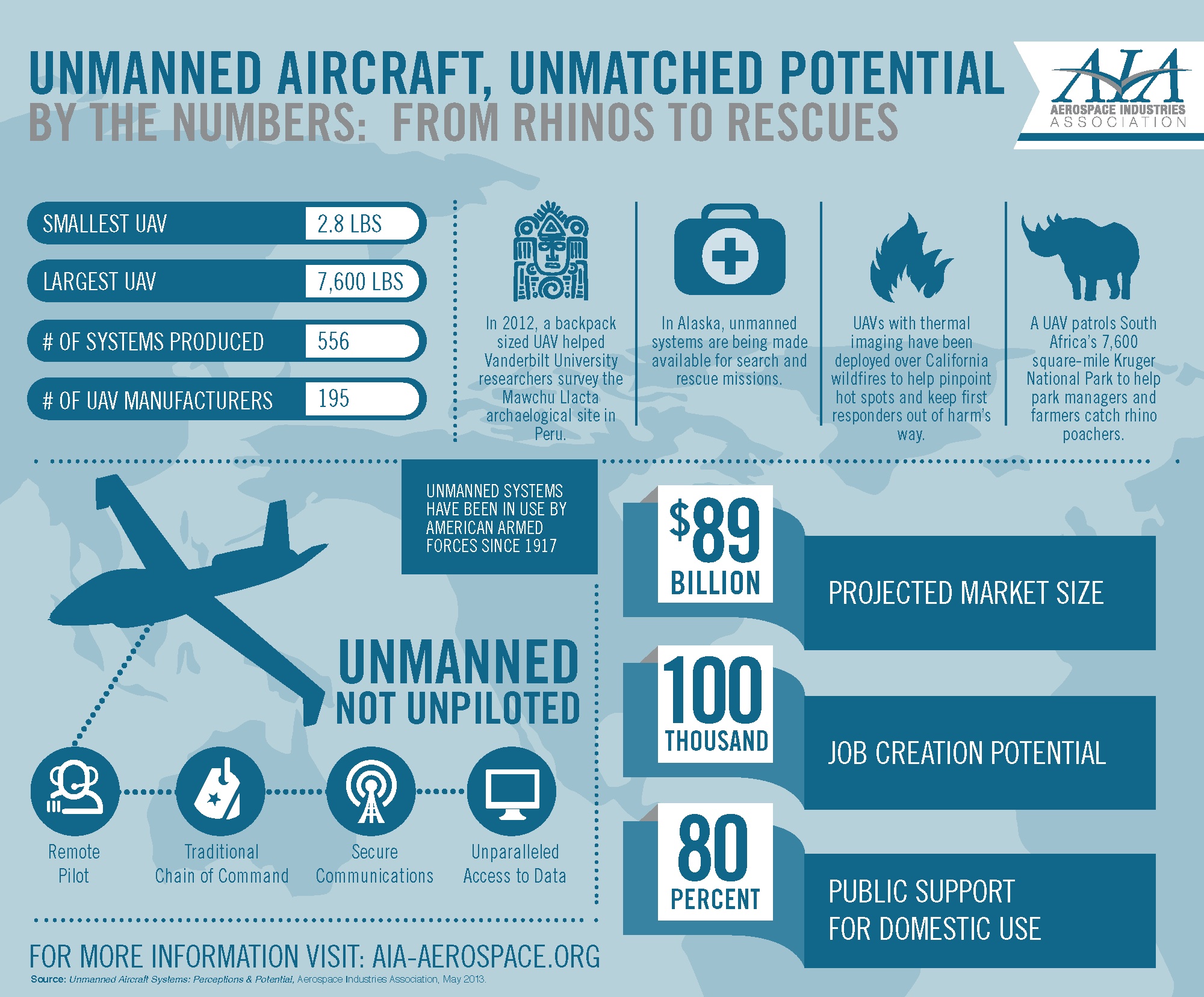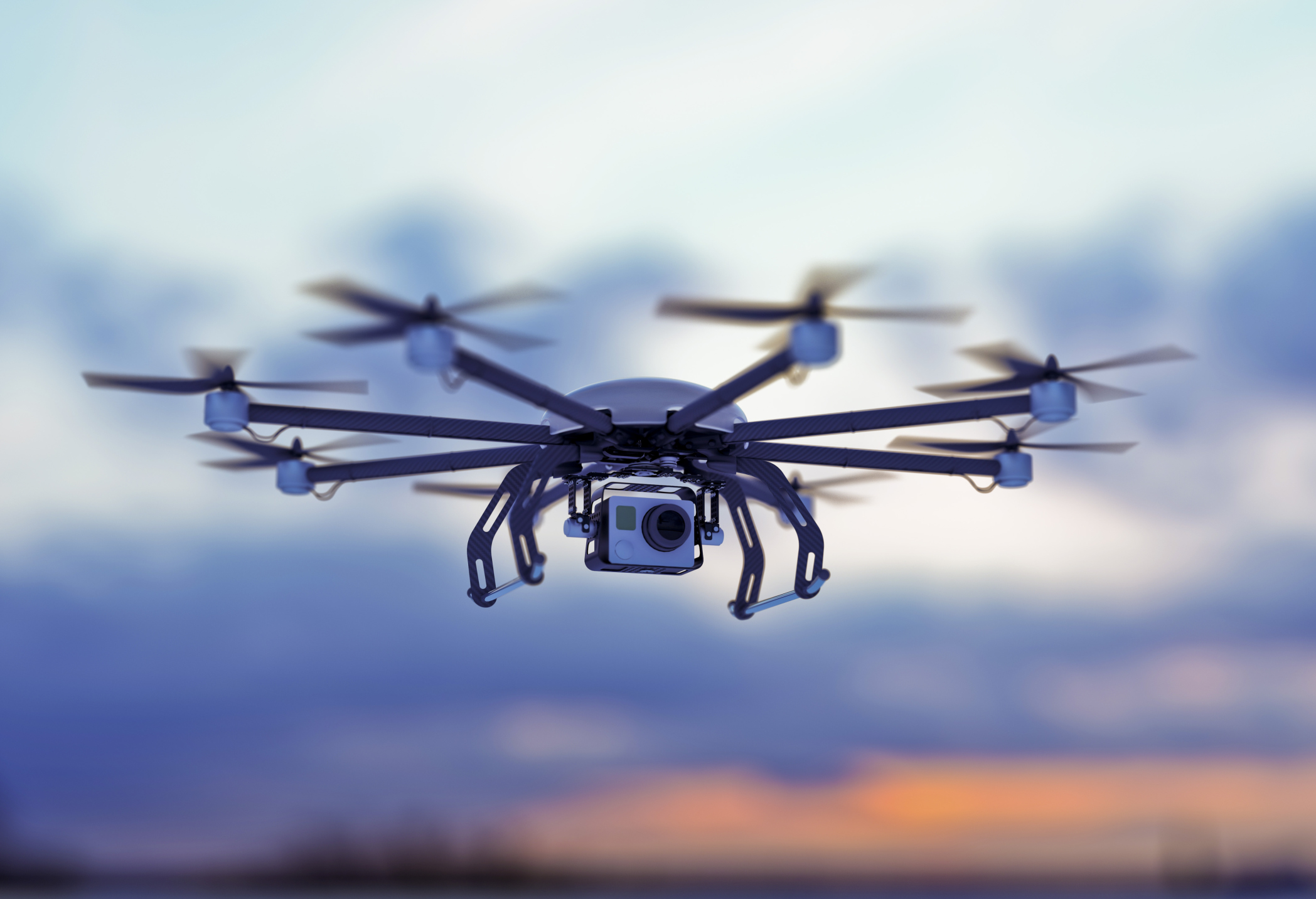Drone Insurance
How to keep your drone from landing you in trouble
Advice From an Insurance Guy
By Jeff Cavignac
The use of unmanned aerial vehicles, commonly referred to as UAVs or “drones,” is taking off, literally. Real estate brokers, developers, emergency response teams and even Wisconsin ice fisherman (they use drones to deliver their beer), to name but a few, are already actively using drones.
The potential application of drone technology is nearly endless. Both Amazon and UPS are evaluating their use for deliveries, among others.

Why all the interest in drones? Besides being fun, drones offer real advantages. Among these are significant savings in time and money, as well as increased safety over traditional tools used to provide aerial photography, such as manned helicopters and small planes. With a small, lightweight and relatively inexpensive drone armed with a digital camera, Wi-Fi and a GPS, a firm can photograph and map out a large job site or completed project in great detail within an hour. A real estate broker can provide a unique “birds eye” view of a specific listing and emergency response teams can investigate and search in a fraction of the time and at significantly less cost than it would take with search teams or airplane or helicopter surveillance.
Drones offer virtually all firms the opportunity to create and capture an aerial view of undeveloped land, hazardous conditions, active building sites, finished projects (inside and out) and all steps in between. This allows businesses to quickly and cost-effectively provide their clients and others with extremely accurate visual representations of a project. Those representations can include photos, videos, thermal readings, infrared scans, 3D topography models and other data.
Drones are amazing tools that promise increased efficiency and effectiveness in serving client needs. Indeed they will likely raise the bar for the types of services and data clients will soon expect.
So why aren’t drones used more often than they are? While drones are currently legal if they are used personally, they are illegal, absent a waiver, for commercial use. This has been complicated by federal red tape as the Federal Aviation Administration (FAA) struggles to come up with rules and regulations governing the commercial use of unmanned aerial vehicles. A secondary factor is the ability to buy insurance for liability arising out of drone use.
The FAA and Commercial Use of Drones
Drones are generally prohibited from use for commercial purposes, yet recreational users face no such regulations. So, in a sense, it’s not what you do, but why you do it, that matters to the FAA. Fly a drone to capture video for fun and it’s no problem as long as you follow their guidelines. Fly a drone to capture a video to make money, and you are breaking the law unless you can secure a special waiver.
A waiver for the commercial use of drones can be secured under Section 333 of the FAA Modernization and Reform Act of 2012. According to the FAA, any aircraft operating in the national airspace requires a certificated and registered aircraft, a licensed pilot, and operational approval. Section 333 grants the Secretary of Transportation the authority to determine whether an airworthiness certificate is required for an unmanned aerial vehicle to operate safely in the National Airspace System.
This authority is being leveraged to grant case-by-case authorization for certain unmanned aircraft to perform commercial operations prior to the finalization of the Small UAS (Unmanned Aircraft Systems) Rule, which will be the primary method for authorizing small UAS operations once it is complete. The Small UAS Rule is expected to be completed in 2017. So, under Section 333, businesses can file for an exemption from current federal regulations on a case-by-case basis and, if granted the exemption, use drones for commercial purposes — at least until the final Small UAS Rule is issued. Through mid-June 2015, approximately 600 petitions have been granted by the FAA.
Insuring Drones
If you use a drone personally, damage to your drone may extend from your personal lines policy. While your policy will likely have an Aircraft Exclusion, many policies make exceptions for “model or hobby aircraft not designed to fly people or cargo.” Liability is the bigger challenge. Personal lines policies have an aircraft exclusion that would include drones. In other words, if you fly your drone into oncoming traffic and cause an accident, you are not covered. Commercial drones have a similar challenge. While you can possibly cover physical damage to your drone by scheduling it on an equipment policy, absent specific liability coverage, you would probably be uninsured. The standard General Liability Policy also has an aviation exclusion and this extends to drones.
We polled the major insurance companies that we do business with (Travelers, Liberty, Chubb, Hartford, Fireman’s Fund and others) and while this exposure is on everyone’s radar, no one is currently offering coverage under their standard insurance programs. One of the main reasons is the fact that, absent a waiver, it is currently illegal to use a drone for commercial purposes. When the FAA does legalize drones, it is anticipated that most major insurance companies will shortly thereafter file specific endorsements to cover this exposure. In the meantime, you can find several sources online who are willing to specifically cover liability arising out of drone use.
The premiums to cover this exposure remains a moving target. Insurers will want to know what the drone is being used for, takeoff and landing locations, where they will be operated (populated areas would pose more of an exposure) and how high they will fly. An additional challenge is that there is no statistically relevant data on which to base rates.
To Drone or Not to Drone?
Drones are undoubtedly going to become more popular. Over the next decade they will likely become an indispensable part of many businesses. For now, it seems those who wish to use drones for commercial purposes can take one of four courses:
• File for an exemption under Section 333.
• Subcontract the use of drones to a firm that has already obtained a Section 333 exemption for the type of work being executed.
• Break the law and fly drones without the exemption.
• Wait until the final Small UAS Rule is issued, supposedly in 2017.
If a decision is made to move forward with the use of drones, now or in the future, be aware of the legality and liability issues. If you need a waiver, make sure you have one. You also need to make sure you are insured for your legal liability arising out of the use of a drone. A wayward drone can cause physical injury and property damage and this doesn’t take into account potential privacy issues. Check your commercial general liability policy to see whether the use of a drone would be covered (it probably isn’t) and, if necessary, seek specific coverage from a specialist aviation insurer.
— Professional Liability Agents Network contributed to this article.


FAA: Drones Need to be Registered
The Federal Aviation Administration announced that the government is going to require drones to be registered — a move spurred by the increasing incidents of drones flying near airports and aircraft.
According to an FAA estimate, 1.6 million small drones will be sold this year, with half during the last three months of the year.
The purpose of the registration is to track down owners if they violate the rules. It would also give the FAA a way to educate owners. The requirement covers aircraft weighing from more than half pound up to 55 pounds, including any payload such as a camera.
Drone owners who are 13 and older will have to register on an FAA website that becomes available starting Dec. 21. The FAA expects parents to register for younger children.
Registration will cost $5 and must be renewed every three years, but the fee will be waived for the first 30 days, until Jan. 20. Owners will have to mark aircraft with an identification number. Recreational fliers can register as many aircraft as they want on one registration number.
Those who got drones before Dec. 21 must register by Feb. 19. People who buy them later must register before their first outdoor flight.
Owners will have to provide their name, home address and email, and their identity will be verified and payments made by credit card, the agency said.
The FAA said it used some of the recommendations from a task force appointed by Transportation Secretary Anthony Foxx, but the move disappointed a large group representing model airplane users.
The Muncie, Indiana-based Academy of Model Aeronautics said registration is an “unnecessary burden for our more than 185,000 members who have been operating safely for decades.” The group maintains that Congress in 2012 prohibited the FAA from new rules for recreational model aircraft users who are part of a community-based organization.

